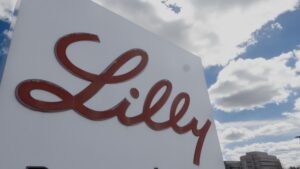Eli Lilly’s $27 Billion Investment: A Historic Shift in U.S. Pharmaceutical Manufacturing
In a groundbreaking announcement that underscores the shifting landscape of domestic manufacturing in the pharmaceutical industry, Eli Lilly has committed to investing a staggering $27 billion to establish four new manufacturing sites across the United States. This bold move is fueled by skyrocketing demand for its blockbuster weight loss and diabetes medications, particularly the revolutionary drugs Zepbound and Mounjaro.
A Response to Market Dynamics and Political Pressure
Eli Lilly’s investment comes at a time when the pharmaceutical sector is under increasing scrutiny to reshore manufacturing capabilities. The Trump administration has made it clear that reshoring and reducing dependence on foreign supply chains are top priorities, even threatening tariffs on companies that fail to comply. Eli Lilly’s announcement made headlines at a significant event in Washington, D.C., featuring key figures from the Trump administration, including Kevin Hassett of the National Economic Council. This not only highlights the political undertones of the investment but also signals Eli Lilly’s alignment with government policies that promote American manufacturing.
Commerce Secretary Howard Lutnick hailed this investment as a representation of the Trump administration’s priorities, emphasizing the emphasis on building and investing in America. He stated, “This investment is exactly what the Trump administration is all about,” a testament to the administration’s desire to enhance labor and manufacturing capabilities within U.S. borders.
Reinforcing U.S. Supply Chains
With this additional investment, Eli Lilly’s total manufacturing expenditures in the U.S. have now surpassed $50 billion in recent years. Ricks, the company’s CEO, highlighted that this reflects the largest pharmaceutical expansion venture in U.S. history—an affirmation of the growing need for active pharmaceutical ingredients domestically. Three of the new facilities will be dedicated to the production of active ingredients, aiming to overcome the supply chain gaps currently faced in the U.S.
Moreover, Ricks pointed out the real gap in supply chains regarding the availability of these critical ingredients. As Eli Lilly expands its footprint, future investments will not only combat supply shortages but also enhance the country’s pharmaceutical manufacturing capabilities.
Economic Impact: Jobs and Opportunities
The green light for these new manufacturing sites means great news for the U.S. workforce, as Eli Lilly has anticipated the creation of over 3,000 high-skilled jobs for engineers and scientists, in addition to 10,000 construction jobs. Manufacturing sites are crucial in fostering local economies, and Eli Lilly’s expansion will benefit numerous communities across the country.
Interestingly, Eli Lilly is currently weighing potential locations for these manufacturing plants, with submissions open until March 13. As they make their decision, the industry is watching closely, knowing that where Eli Lilly chooses to build could serve as a bellwether for future investments from other pharmaceutical giants.
A Broader Future Focus
Eli Lilly is not limiting its vision to just current obesity and diabetes treatments. The company is strategically poised to leverage its investments for a broad pipeline targeting cancers, Alzheimer’s disease, and other serious health conditions. With analysts projecting that the global market for obesity drugs could exceed $150 billion annually by the early 2030s, Eli Lilly aims to carve out a significant share in this burgeoning market, especially as competition intensifies.
However, the firm is cautious of alternative medications that threaten to infiltrate the market. Ricks pointed out that patients seeking cheaper compounded medications, often of questionable quality, pose a risk to both patients and the pharmaceutical market as a whole. The FDA has declared the shortage of tirzepatide over, aiming to curb the production of those unauthorized alternatives which riled up during interruptions in the supply of original medications.
Conclusion: Looking Ahead
As Eli Lilly looks to the future, its CEO has voiced that extending key tax provisions under the 2017 Tax Cuts and Jobs Act is paramount for their continued innovation. The framework of favorable policies, coupled with strategic investments, could set a precedent for how pharmaceutical companies navigate the complexities of U.S. manufacturing.
At Extreme Investor Network, we believe that Eli Lilly’s significant investment not only signals an important turning point for the pharmaceutical industry but also sets the tone for future manufacturing endeavors by American companies. As we monitor this pivotal shift, we invite you to stay tuned for updates and insights into how these developments will unfold and their larger implications on the business landscape. Stay connected with us to explore the forefront of investment opportunities and emerging trends.

